The dust hasn’t yet settled on Alaska Airlines’ acquisition of Hawaiian Airlines plus the upcoming changes for Southwest Hawaii flights. Yet another major shift could already be on the horizon.
Hawaii flight aspirant Frontier Airlines is reportedly considering a renewed bid to acquire struggling Spirit Airlines at a critical juncture. Somewhat akin to Alaska’s timely intervention with Hawaiian, Spirit has faced severe financial challenges, including billions in debt and the looming possibility of Chapter 11 bankruptcy.
While Spirit’s future remains uncertain, even as Hawaiian’s fate was sealed, the prospect of a merger with Frontier could lead to significant changes in the airline industry—and possibly in Hawaii’s skies.
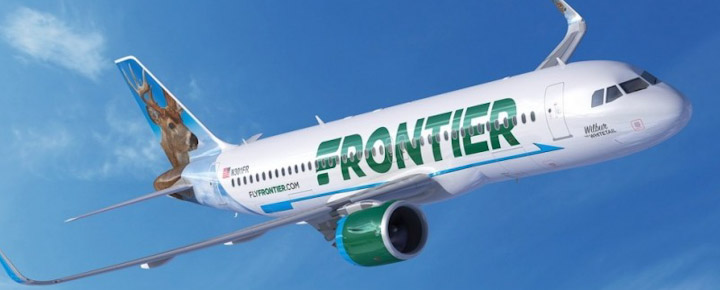

Spirit and Hawaiian condition similarities and Frontier’s renewed interest
Spirit Airlines has been struggling to stay afloat, with more than three billion in debt plus secured bonds maturing soon. Financial pressures have left Spirit exploring list ditch options.
Unlike Alaska’s successful takeover of Hawaiian, Spirit’s previous attempt to be acquired by JetBlue was blocked by a U.S. court earlier this year, allegedly over concerns about airline industry competition. Frontier, which had initially attempted to purchase Spirit in 2022, is reportedly back at the table, seeking to capitalize on Spirit’s current vulnerability.
But unlike with the Hawaiian deal, Frontier’s Spirit deal could occur within a Chapter 11 framework. The implications of this possible merger go beyond restructuring debt and boosting market share—this deal could impact Hawaii-bound travelers.
Frontier Airlines and Hawaii: a long-standing ambition.
Frontier has made no secret of its interest in expanding into the lucrative Hawaii air travel market. The airline has long eyed the islands as a key target for its ultra-low-cost model, which can be served via its current and future fleet of Airbus A321neo aircraft. Frontier could finally make their dream a reality. The narrow body A321neo, with its extended range and fuel efficiency, is also used by American, Delta, and Hawaiian, and from an airline standpoint, is tailor-made for long-haul Hawaii flights.
For budget-conscious travelers, Frontier’s introduction to the Hawaii market could actually be a game-changer. The airline is known for offering lower base fares compared to its competitors, and its entry into the Hawaii market could increase competition and help drive down ticket prices.
While details of a possible Frontier Hawaii plan have not been finalized, and questions remain, the A321neo is expected to play a crucial role in the airline’s ambition to service the islands.
What a Frontier-Spirit merger could mean for Hawaii.
A successful merger between Frontier and Spirit would create an interesting new player in the ultra-low-cost carrier sector. Combining the two carriers’ fleets and resources could accelerate the introduction of new routes, possibly including direct flights from various U.S. cities to Hawaii.
Frontier’s focus on long-haul routes using the A321neo could shift the dynamics of a merged airline. This merger could bring Hawaii-bound travelers more affordable options in a market that is dominated by far larger carriers.
Economic and market impacts.
Introducing ultra-low-cost carrier flights could pressure legacy carriers such as Alaska Airlines and Southwest Airlines, forcing them to reconsider pricing strategies and service offerings. Increased competition from a combined Frontier-Spirit airline would likely lead to more affordable options for Hawaii-bound travelers.
However, budget airlines like Frontier and Spirit have historically struggled with service reliability, frequent schedule changes, and countless add-on fees. These issues could pose challenges for travelers to Hawaii, many of whom have come to expect a more seamless and reliable travel experience.
The Frontier model often sacrifices comfort and convenience in favor of lower prices; something passengers will need to consider as Frontier moves closer to entering the Hawaii market.
Challenges for A321neo passengers: comfort vs. cost.
While the A321neo offers extended range and lower fuel consumption, allowing for longer direct flights to Hawaii, the aircraft has long raised concerns about passenger comfort, particularly on Hawaii journeys. As a narrow-body plane, the A321neo has the perception of less space and fewer amenities than the wide-body aircraft also used for some Hawaii routes. This can mean a more cramped and uncomfortable feeling experience for economy passengers, albeit akin to Alaska and United AIrlines’ Boeing 737 MAX planes.
Most Frontier A321 seats have a pitch of just over 28 inches, which is slightly less than the industry average pitch of 30–31 on the aircraft.
However, Frontier’s entry into the Hawaii market could provide much-needed low-cost alternatives for those who are willing to trade comfort for cost.
Hawaii’s airline market is always on the cusp of change.
The potential merger between Frontier and Spirit, combined with Frontier’s hopes to use the A321neo for Hawaii routes, signals a significant shift in the competitive landscape of Hawaii travel. As the industry continues to evolve, island travelers may soon find themselves with more choices—and potentially lower fares.
However, the path forward is far from certain. Spirit’s financial troubles, Frontier’s ambitions, and the overall capacity of the Hawaii market will each determine the impact of future flights to the islands. Not only that, but while the A321neo is type-certified for ETOPS across the Pacific, the airline itself would have much work to do to complete that work across its operations.
One thing is clear: the next few years have the potential to usher in a new era of budget travel to Hawaii, one where the trade-offs between comfort, cost, and convenience could be more pronounced than ever.
Are you ready to fly Frontier to Hawaii?
Get Breaking Hawaii Travel News
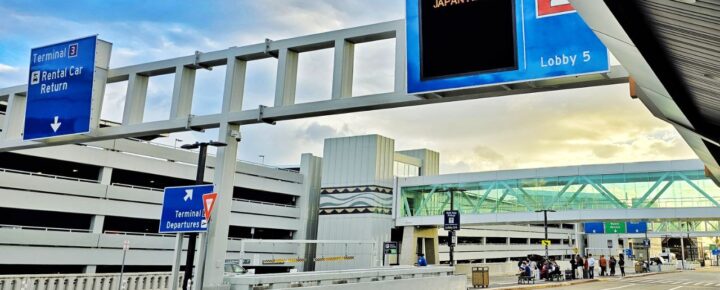

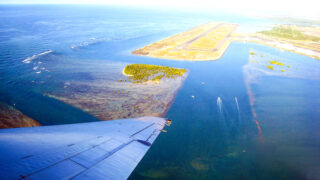


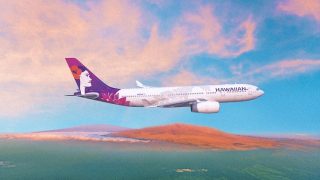
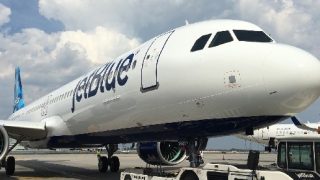
For your information, SWA is Not considered a “legacy” carrier. The ones that are left after many bankruptcies and mergers are basically United, American, and Delta. SWA got airborne in the early 70s and was the First airline to offer much lower fares and bags fly free—it still does. Next year, it will begin selling assigned seating, extra-room seats, and redeyes, some from Hawaii.
Aloha!!
Very true, Southwest was a regional airline, Texas only, at the start and all those things (low cost) at the start. They have grown to the largest domestic carrier in the US. They expanded to South America acquiring AirTran and have recently started the long range over water (ETOPS) to Hawaii. Hawaiian and Alaska are considered legacy carriers as well. According to Air Advisor Cheapest Airlines in the US Southwest is the second most expensive domestic airline after Delta. I flew from Las Vegas to Reno on them, a little farther than Honolulu to Hilo, at $279 each way. They are great at marketing, milking the image of the low cost carrier they started as, but are not really that anymore.
I’m not sure how “lucrative” the mainland to Hawaii market is. Otherwise, Hawaiian Airlines wouldn’t have been loosing money and sold itself to Alaska Airlines. If the mainland service was profitable, but the company was drug down by its interisland and/or South Pacific/Asia operations, that gives a pretty good idea what the future of those two parts of their business will be.
The real money losers are the inter-island operations. The current fares don’t even come close to covering the cost of operations. But if Hawaiian were to raise fares to cover their costs, people would scream bloody murder. It happened after Go! drove Aloha out of business and subsequently folded themselves.
Because of Hawaii’s inherent infrastructure challenges, many residents rely on interisland flights for medical, business, and family needs. Hawaiian Airlines uses profits from its long-haul network to subsidize its interisland operations.
Well the “Predator” kinda, sorta, almost took out the little guy but now he is back with his Eskimo cousin and they mean business. The predator is too busy trying to figure out who is in charge, what they want to be and where they are going.
No to flying Frontier…seat pitch under 30″ is way too tight for long flights!
It worries me that I wouldn’t be welcomed in Hawaii anyway. I do tolerate and fly Frontier since it gets me where I’m going and often times it has a base price that’s a fraction of Southwest. Wait and see on Hawaii for me I guess.
It doesn’t make much sense for an ULCC to enter the Hawaii market. Perhaps they can get to the islands for $79 on Frontier, but I think the clientele that flies those types of airlines would struggle to find hotels to fit their budgets.
Friends don’t let friends fly Frontier
I always say that I’ll try flying Frontier, and in the end I chicken out. Too much bad press, too many friends say don’t do it. To Hawaii? Not sure.
There is not enough money for me to fly to Hawaii on Frontier. Their seats are like sitting on a folding chair. Gate agents/ground crew are third party employees at Denver International Airport. Frontier uses a company named Menzies. Just look up the reviews for Frontier!! There was a news report that Frontier gate agents received a commission for catching oversized carryon bags. Then required $100.00 to check the bag.
i think more airline competition would be great for visitors.
What market conditions have changed to make ULCC operations viable? Budget flight operations have Never been successful to/from Hawaii. While I wouldn’t classify Southwest as an ultra-low-cost carrier, even Southwest is struggling with yields. Five-hour flights really cut into aircraft utilization. A Frontier/Spirit merger won’t change that equation. All I can say is: Good luck with that!
A massive amount of speculation here. A lot of “Could” bring statements but missing some other “could” bring statements. The other carriers are not stuck with serving Hawaii as its primary source of revenue (and high cost) like Hawaiian was so if their ridership on Hawaii routes drop they will shuffle, supply and demand and an equilibrium point. Gate space is gate space, a fight always. Historically Hawaii has not been able to support 2 interisland large carriers, Southwest thought they could leverage that fact and put Hawaiian out of business, a big factor in forcing the merger with Alaska and Hawaii losing its only organic mainline carrier (ironic that Alaska / Hawaiian is based in the state of Washington). Generally competition is good if done properly. Southwest coming and pricing below cost because they could lose money longer than Hawaiian was not the kind of competition that is typically good long term, hopefully if these bargain carriers come it will be good.
This would sound by it’s very nature, the opposite of what Governor Green wants, the climate around the Spirit Check-in Counter can be very dangerous, as we’ve seen in Puerto Rico, Miami, FLL, Philadelphia among others, where violence broke out with their passengers! 737Max or otherwise, not the preferred cabin for long flights, 5 hours becoming 6+!
mahalo or iorana
there is a future small air market which is being prepared within 6 to 7 years.
this future market is serving the Marquesas Islands which are a 3 hour flight from Honolulu and which could connect in a future aukland project because these 3 countries have the same origins and almost the same languages. This needs to be studied.
maruru
This is highly unlikely for several reasons.
1. The distance between Honolulu and Nuku Hiva is 2393 miles / 3892 km, equating to a travel time of 4 hours 30 minutes at jet speeds.
2. The runway at Nuku Hiva is only 5577 feet / 1700 meters long, which is not sufficient for jet operations.
3. The limited infrastructure at Nuku Hiva would make larger-scale tourism virtually impossible.
I hate to say this, and I know I’m going to get grief for it but what Hawaii doesn’t need right now, is more “budget” tourists overrunning everything.
Good point. I have already heard of the “Southwest” effect, the ULCC passengers might not be the tourists Hawaii wants or needs. Remains to be seen.
I know that there will be a lot of blowback introducing a budget airline with budget tourists. However everyone is entitled to go to the Hawaiian Islands even if they are on a tight budget.
Nancy, while everyone is entitled to any vacation they can afford, they aren’t entitled to a cheap vacation to anywhere. Look at it this way, I love cars, especially Bugatti’s. However, I can’t afford a Bugatti. No one is suggesting that we force the price of Bugatti’s down to a point where I (and everyone else in the world) can afford one because we are “entitled” to be able to own a Bugatti. As for Hawaii, over-tourism is a real problem there, and I just happen to believe in a capitalist system that says that we need to rise the price until demand drops.
I understand what you are saying however I was on Maui and Hawaii in June/July (prime travel time) and there was no over tourism to see. Restaurants fairly empty, hotels had vacancies as well as condos, shops were not crowded. All numbers were down. In any case, it is not, in my opinion, proper to discriminate against someone because they can find a way to get to the Islands with their budget.
I don’t disagree. If someone is willing to ultimately pay as much if you check bags or maybe slightly less to sit in a very cramped seat that doesn’t lean back at all, go for it. My last flight on Frontier on a short distance involved 2 guys almost getting into a fight (over space and kicking the tightly spaced seat in front of him) requiring a relocation of 1 and then a stop on the taxi in and then law enforcement meeting them and escorting them from the aircraft. That may be what some want or shoold be entitled but many do not want that behavior on the plane or off the plane.
Actually, no one is entitled to anything, except life, liberty, and the pursuit of happiness, and only what you can pay for.
No one is ‘entitled” to anything except life, liberty, and the pursuit of happiness……that they can afford.